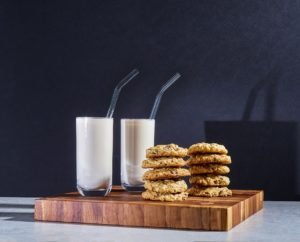Building Blocks of Health: Dairy
The Building Blocks of Health series is cruising right along and today is all about... dairy!Types of Dairy:Just like with protein, not all dairy foods are equally good for you. Some are filled with saturated fats, which, when consumed in excess, can raise your risk of heart disease and stroke, mostly by causing too much cholesterol to build up in your arteries (source).The Dietary Guidelines for Americans and MyPlate both recommend that people choose low-fat or fat-free dairy foods when eating foods in the dairy group.The dairy food group includes milk, cheese, and yogurt. It also features lactose-free milk and fortified soy milks and yogurts. Other plant milks aren't usually part of the dairy food group because they don't contain enough of the nutrients that other dairy foods have. Why Consume Dairy?According to MyPlate, "Consuming dairy products provides health benefits — especially building and maintaining strong bones."Here are the key nutrients you can find in dairy products, along with the roles they play in good health.
Why Consume Dairy?According to MyPlate, "Consuming dairy products provides health benefits — especially building and maintaining strong bones."Here are the key nutrients you can find in dairy products, along with the roles they play in good health.
- "Calcium is used for building bones and teeth and in maintaining bone strength as you grow older. Dairy products are the main source of calcium in American diets" (source).
- "Diets rich in potassium may help to maintain healthy blood pressure" (source).
- Protein is a macronutrient vital for general health and wellness. For more details about protein, visit the post Building Blocks of Health: Protein.
- "Vitamin D functions in the body to maintain proper levels of calcium and phosphorous, thereby helping to build and maintain bones" (source).
How Much Dairy?MyPlate has revealed that 90% of all Americans are probably not getting enough dairy foods in their daily lives.Most people need 3 cup servings of dairy foods each day. To get a personalized plan that's specific to your individual needs, visit MyPlate Plan. 5 Favorite Dairy Recipes:Not sure where to start? Try these amazing recipes that feature dairy foods...
5 Favorite Dairy Recipes:Not sure where to start? Try these amazing recipes that feature dairy foods...
- Banana Flax Smoothie
- Morning Muesli
- Spinach Vegetable Dip
- Cold Cucumber Soup
- Pineapple Orange Frozen Yogurt
Are you seeing a pattern in this new series? If you've noticed that these building blocks are the same as MyPlate's food groups, you're right! It's all part of a new approach to help make MyPlate more accessible to your clients. The fun all starts with this poster, which features healthful building blocks to create a balanced eating pattern... And if you're new to the series, no worries! Here are all of the previous installments, collected in one handy place!
And if you're new to the series, no worries! Here are all of the previous installments, collected in one handy place!
References:
- https://medlineplus.gov/ency/patientinstructions/000838.htm
- https://www.myplate.gov/eat-healthy/dairy
- https://www.myplate.gov/myplate-plan/results/2000-calories-ages-14-plus
- https://www.myplate.gov/myplate-plan


